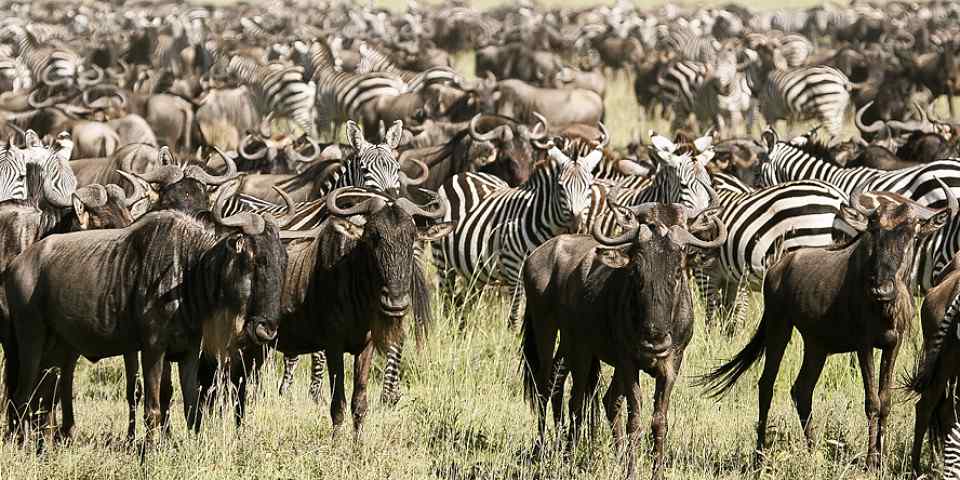
Gorilla Trekking: Uganda Versus Rwanda, Which Is Better?
 By Ariadne van Zandbergen
By Ariadne van Zandbergen Ariadne is an Africa expert. She and her husband form a team who author the Bradt guidebooks to Rwanda and Uganda.
Gorilla trekking in Uganda versus Rwanda, which is better? Both are great options, but which is best depends on your needs. In this post, we’ll have a look at some of the differences between gorilla trekking in Uganda and Rwanda. Below are some of the main points of comparison to help you decide where to go on a gorilla trek.
Comparison 1: Number of Permits
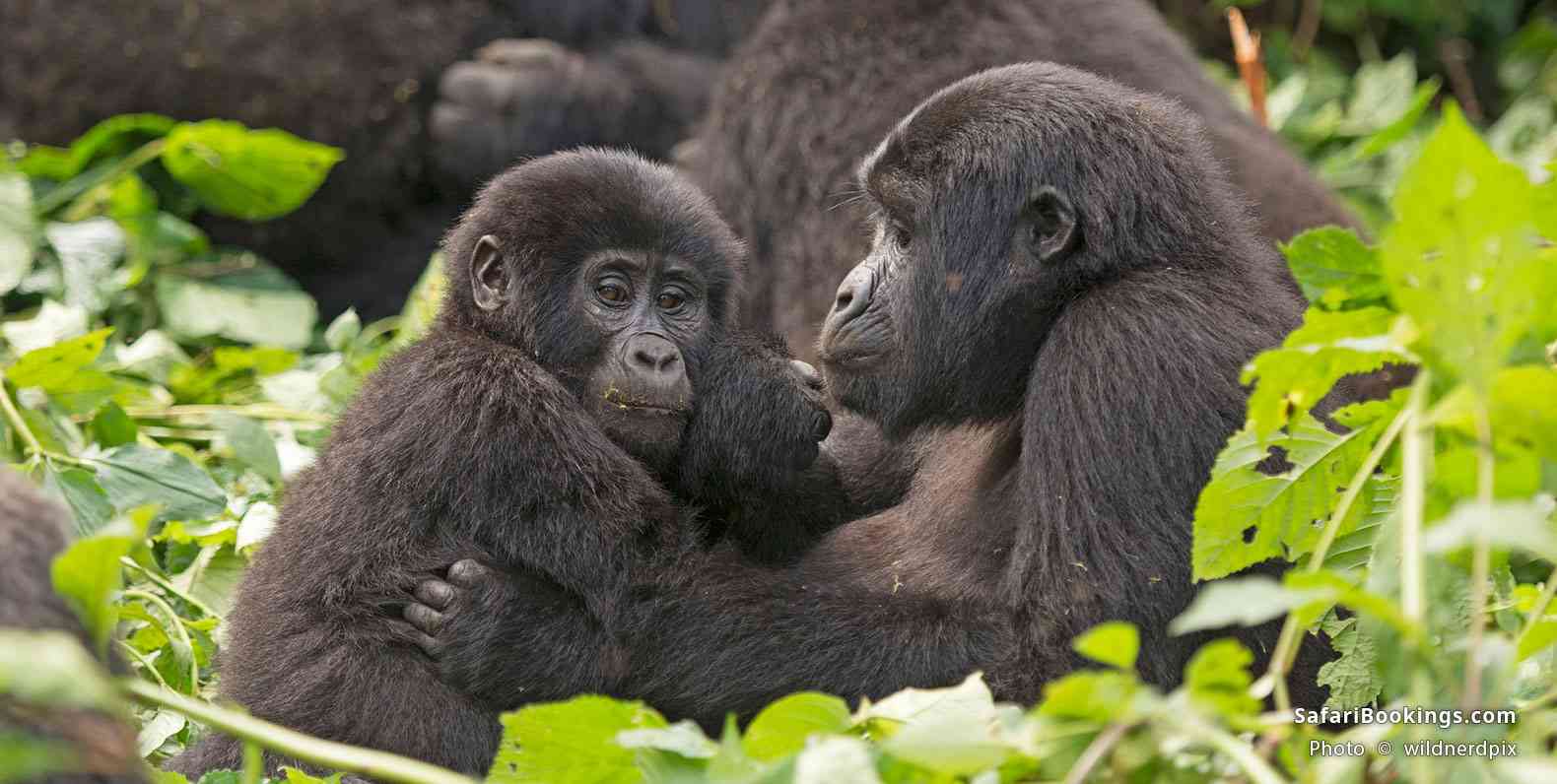
As one of the ultimate wildlife experiences in Africa, gorilla trekking is becoming more and more popular. Luckily strict regulations are in place to protect these gentle giants, and the number of permits available per day is limited. A maximum of eight visitors can spend up to one hour with any given gorilla group on any given day. In Rwanda, there are 12 groups available for tracking, all in Volcanoes National Park. In Uganda, more than 25 trackable groups inhabit Bwindi Impenetrable National Park, along with one group in Mgahinga Gorilla National Park.
Mgahinga Gorilla National Park in the Virunga Mountains is an amazing place for gorilla trekking. But with just one gorilla group and very few accommodations choices in the area, it isn’t a popular option. For the purposes of this blog, this off-the-beaten-track gorilla park has been left out of the equation and the comparisons below are between the two most popular and accessible gorilla trekking destinations: Bwindi in Uganda and Volcanoes NP in Rwanda.
1,123 Bwindi Tours382 Volcanoes NP Tours
Comparison 2: Habitat & Landscape

The habitat and landscape of the main gorilla trekking parks in Uganda and Rwanda are very different. Rwanda’s Volcanoes NP is part of a mostly dormant volcanic mountain range known as the Virungas. Here, the gorillas stay almost exclusively in the bamboo forest zone, a beautiful setting in which to see these great apes. The vegetation tends to be quite open, which is ideal for easy viewing.
By contrast, Uganda’s most popular gorilla trekking destination, Bwindi Impenetrable, is an extensive tract of tropical rainforest. This is a stunning setting, but as the park’s name suggests, the denser vegetation can sometimes make it a bit more challenging to obtain clear views of gorillas.
Comparison 3: Cost
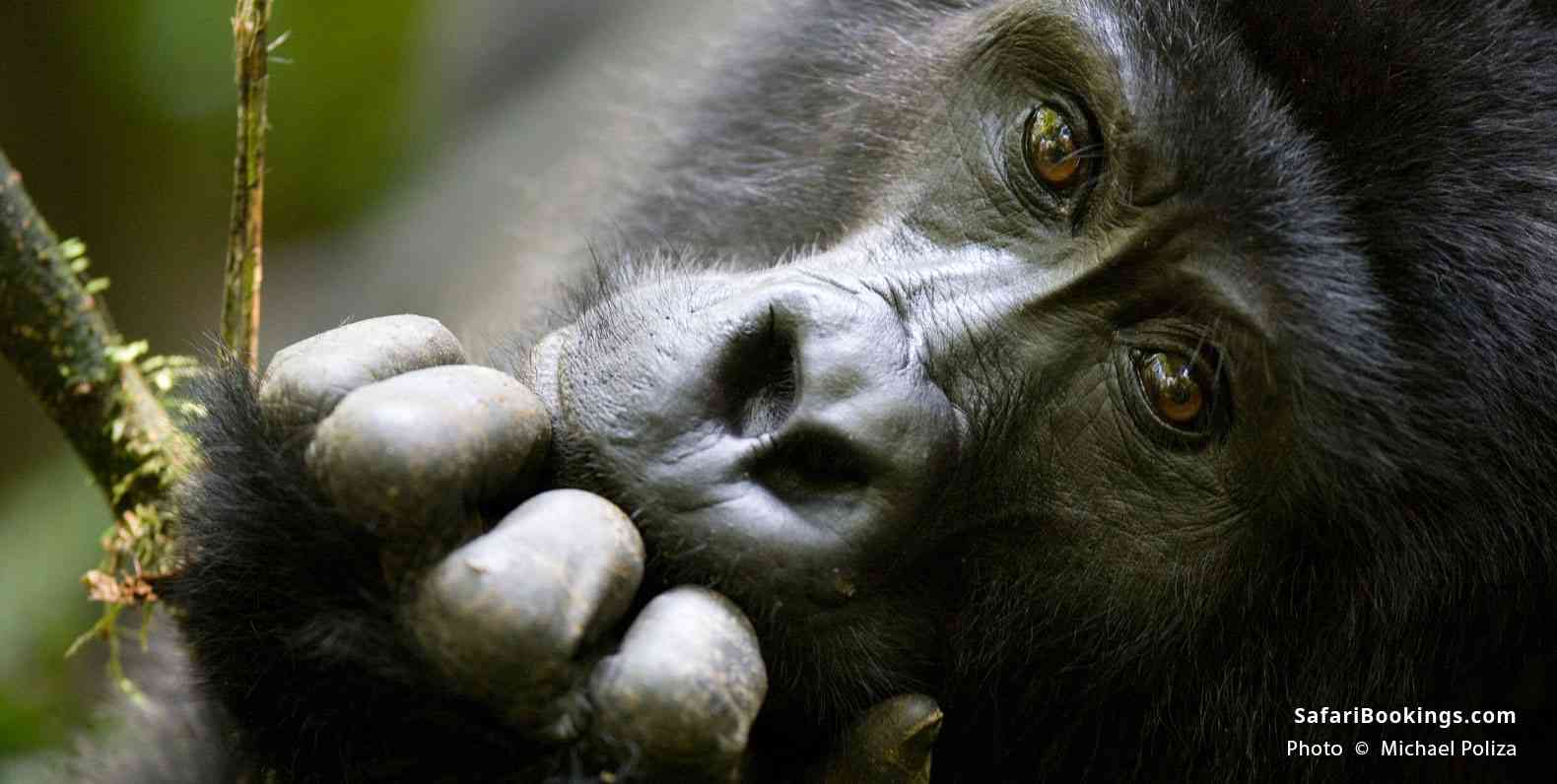
Another important point to consider when comparing gorilla trekking in Uganda versus Rwanda is the cost. For a foreign nonresident, the price of a gorilla trekking permit in Uganda is US$800, whereas in Rwanda it’s US$1,500. A big difference. Of course, you can argue that the difference isn’t quite so significant when it is absorbed into a 10-day holiday package.
This fee doesn’t include any travel arrangements, such as transport, your guide, or accommodations. It only covers the activity, the park ranger who will be your guide for gorilla trekking, and the trackers who go ahead to find the gorillas. Tips for the guide, trackers and optional porter are extra. It should be noted that these full fees apply only to nonresidents who are not citizens of an African country. Permits for foreign residents cost US$500 in Rwanda or US$700 in Uganda, while East African citizens are charged US$200 in Rwanda and US$80 in Uganda. Holders of other African passports pay US$500 in both countries.
Comparison 4: Trek Conditions
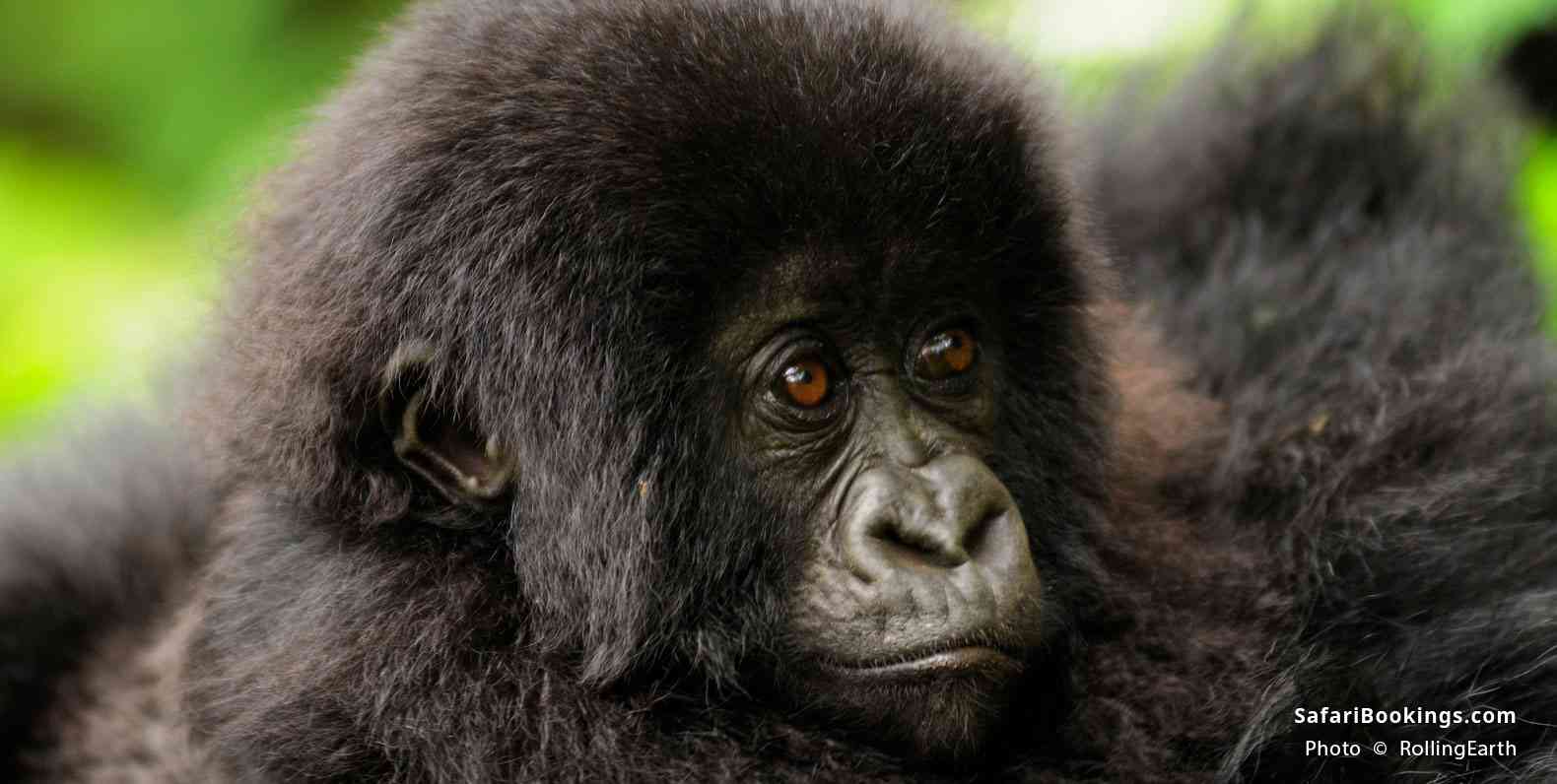
In general, trekking conditions tend to be a bit easier in Rwanda than in Uganda. This is not absolute though. Conditions change daily depending on the location of the gorillas. Each gorilla group has its territory and some of them are usually easier to reach than others.
Conditions tend to deteriorate after heavy rain when the forest paths become very slippery. This is especially true in Bwindi, which sees very high rainfall throughout the year. The tracks in Rwanda are usually quite defined, while the tracks in Uganda tend to be very steep and overgrown. Having said that, the higher altitude in Rwanda can be a challenge for some people.
Comparison 5: Accommodations Options
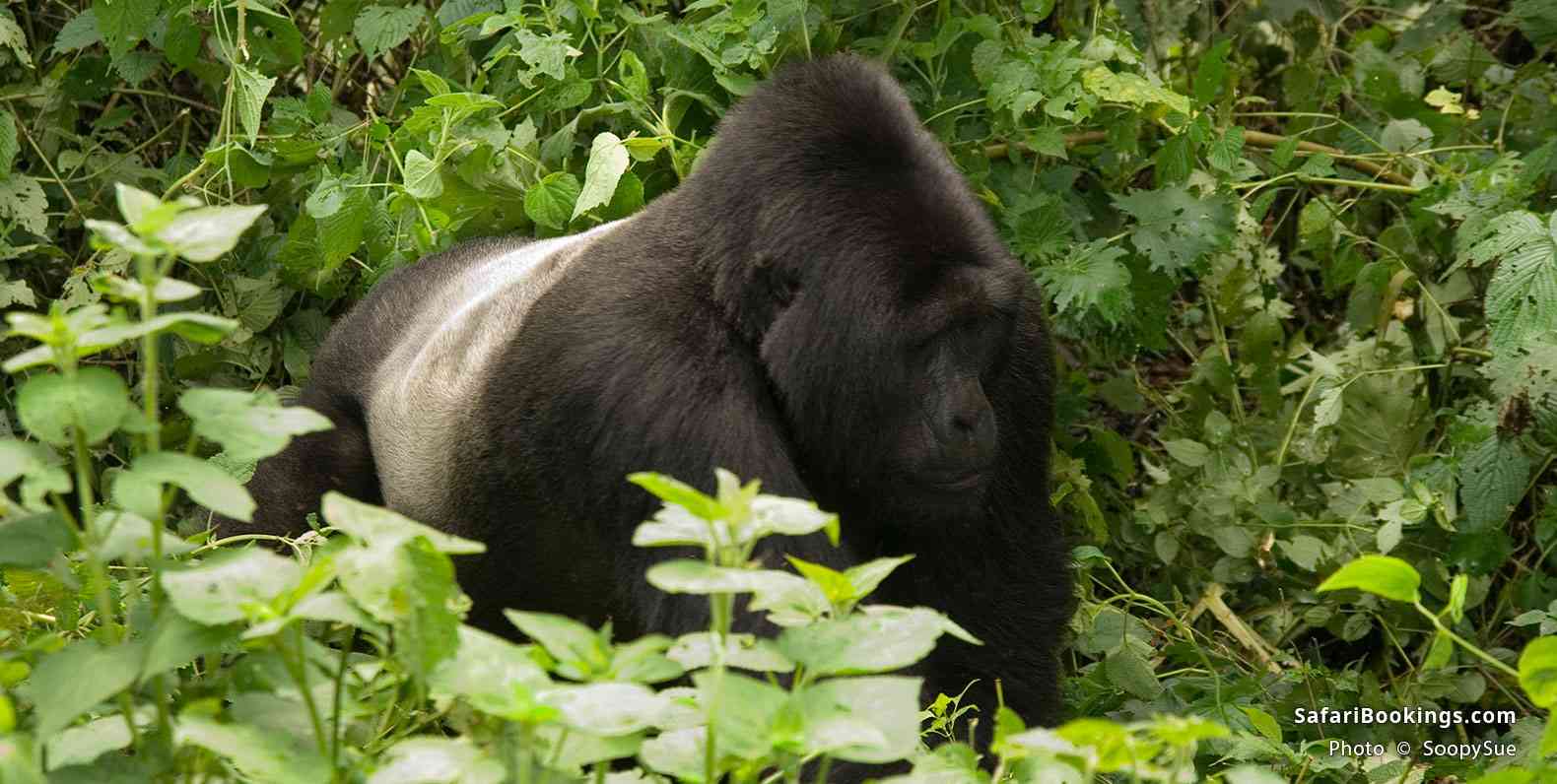
There are good accommodations options for gorilla trekking in Uganda and Rwanda. Rwanda has perhaps more choice in top-end luxury lodges, while Uganda has a few more mid-range options. Several lodges in Uganda border or lie within the park and have a true forest feel, while in Rwanda many lodges have mountain and/or lake views, but most are a bit farther away from the forest boundary.
Comparison 6: Getting There
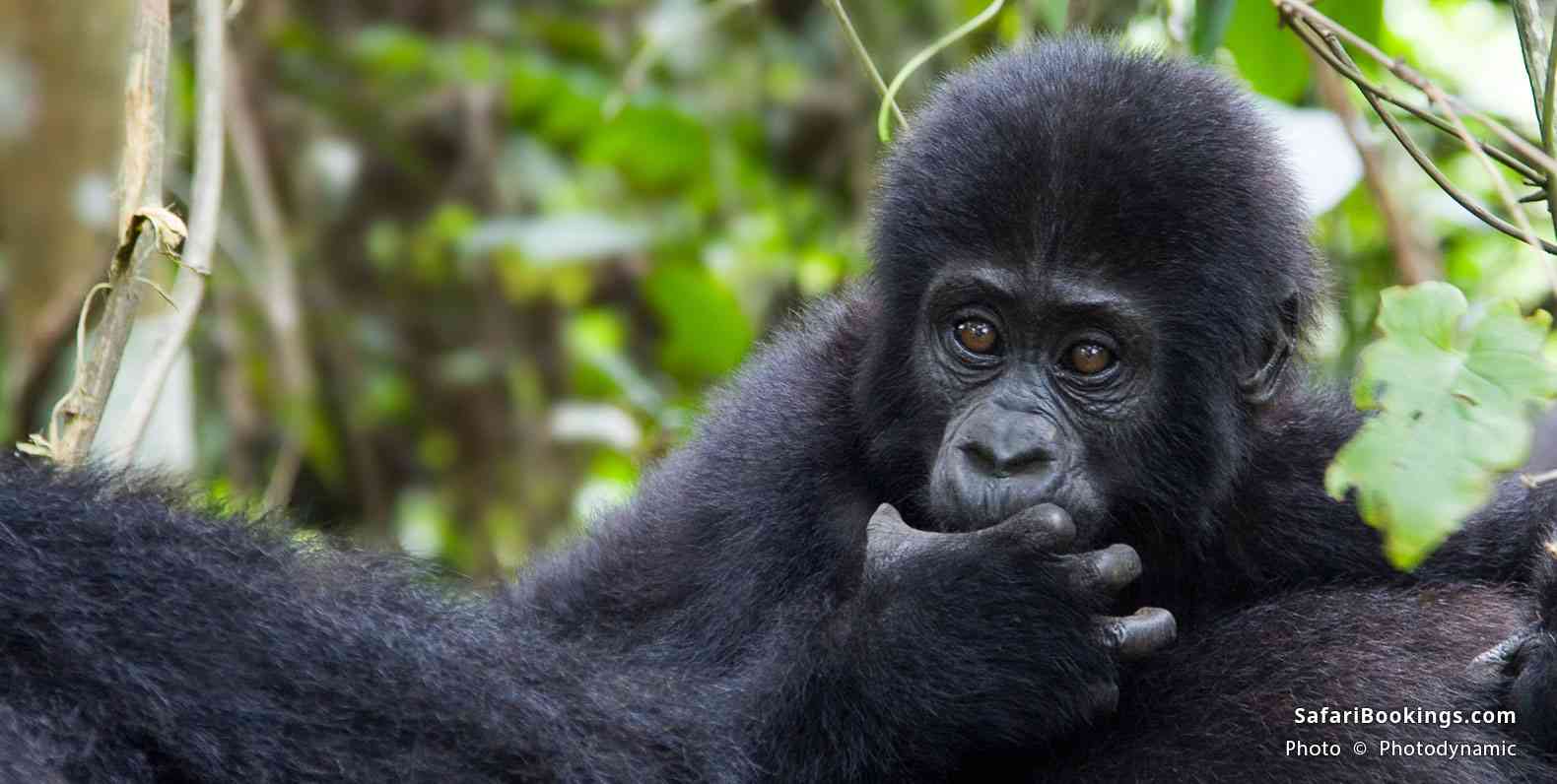
Volcanoes NP in Rwanda is considerably more accessible than Bwindi in Uganda. The drive from Rwanda’s capital city, Kigali, to Volcanoes NP takes up to three hours on a good road. The drive from Entebbe, Uganda’s gateway for most visitors, to Bwindi takes between eight and 10 hours. While there is only one starting point for gorilla treks in Rwanda, there are four different trailheads in Bwindi. Some of them may require a good 4x4 vehicle to reach. There are, however, scheduled flights to Bwindi.
Alternatively, a stay in Bwindi can be incorporated into a larger road tour in Uganda, visiting other parks and reserves. For a quick gorilla trekking tour or an add-on to a safari in Kenya or Tanzania, Rwanda is most convenient.
Comparison 7: Overall Safari

Most people will incorporate a gorilla trek into a longer safari. For this, Uganda has more options than Rwanda. Uganda’s Murchison Falls and Queen Elizabeth National Parks are two top-notch savannah reserves. You’ll see most iconic safari animals here, including elephants, lions, buffalo and giraffes. All the Big Five (lion, leopard, buffalo, elephant and rhino) are present except for rhinos, which can only be seen in Ziwa Rhino and Wildlife Ranch. Uganda is also a top destination for chimpanzee trekking, while Lake Bunyonyi is a great place to chill out for a couple of days at the end of an action-packed safari.
Rwanda is less established as a stand-alone safari destination, but it has a few very good off-the-beaten-track gems worth tagging onto your gorilla trek. Most notable are Akagera National Park, a scenic Big Five savannah park, and Nyungwe National Park, a highland rainforest, which is home to 13 primate species, including trackable chimpanzees.
1,698 Uganda Tours547 Rwanda Tours
Comparison 8: Best Time to Go
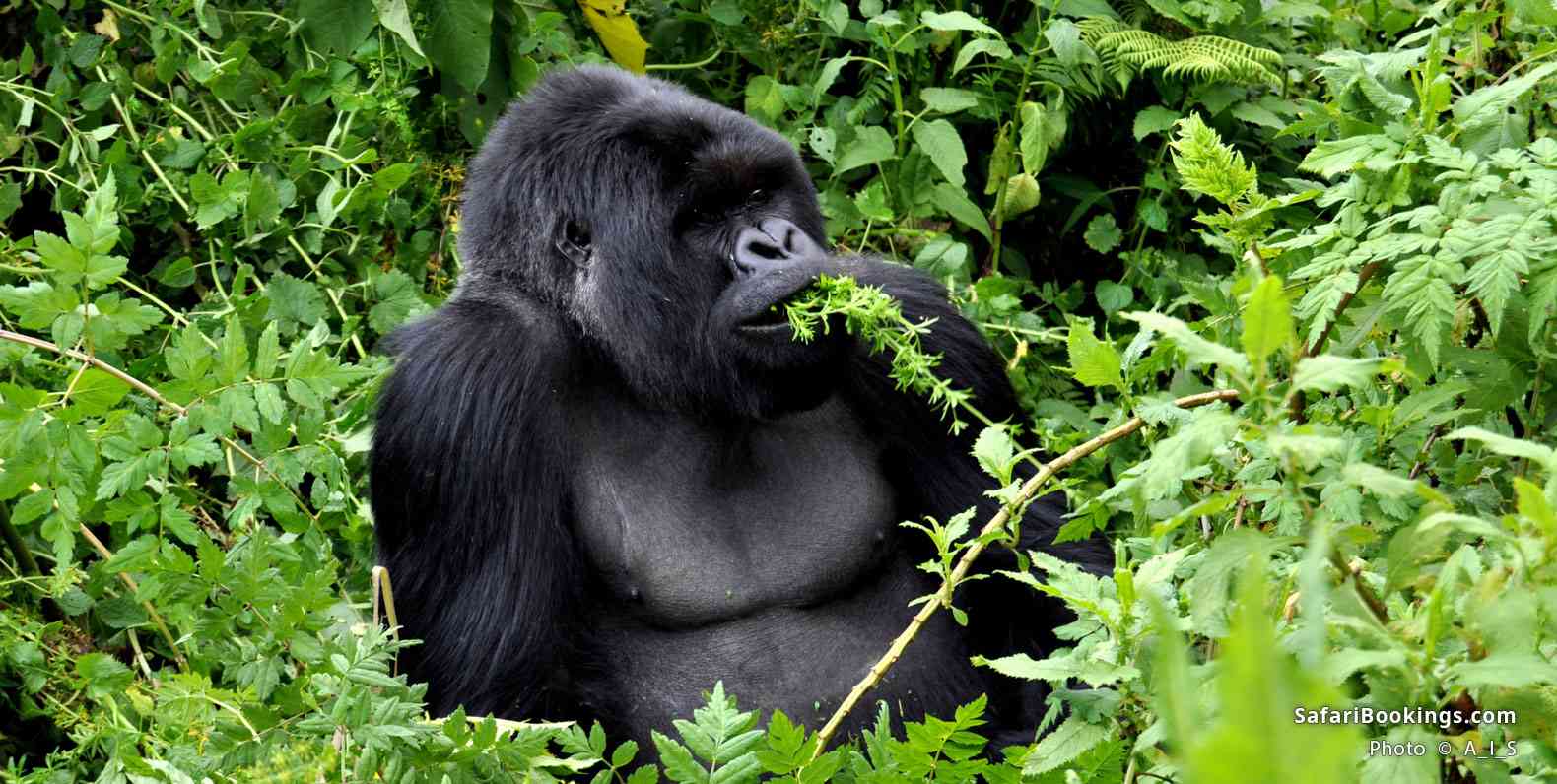
The best time for gorilla trekking in Rwanda and Uganda is from June to August and to a lesser extent from December to February. These are the driest months. At this time, the trails tend to be less slippery and hiking in the forest is easier. Your experience will less likely be interrupted by rain.
However, Volcanoes NP in Rwanda sees less rainfall overall and conditions are mostly fine from May to February. Bwindi is a rainforest, and you can get wet here at any time. You’ll still see the gorillas though. As long as you avoid the peaks of the rains (April to May and October to November) you should be OK. Waterproof jackets are a must, of course.
Want To Go Gorilla Trekking?
Click on the button below to compare gorilla trekking tours offered by top-rated tour operators.
 By Ariadne van Zandbergen
By Ariadne van Zandbergen Ariadne is an Africa expert. She and her husband form a team who author the Bradt guidebooks to Rwanda and Uganda.
More About This AuthorAfrican Safari Tours
-
![3-Day Luxury Adventure Safari to Serengeti & Ngorongoro]()
3-Day Luxury Adventure Safari to Serengeti & Ngorongoro
$1,863 pp (USD)
Tanzania: Private tourLuxuryLodge
You Visit: Arusha (Start), Serengeti NP, Ngorongoro Crater, Arusha (End)

Full Package Adventures
5.0/5 – 222 Reviews
-
![11-Day Tanzania Safari with Zanzibar Beach Break]()
11-Day Tanzania Safari with Zanzibar Beach Break
$9,199 to $12,299 pp (USD)
Tanzania: Private tour
Mid-range Lodge & Tented CampYou Visit: Arusha (Start), Tarangire NP, Lake Manyara NP, Ngorongoro Crater, Serengeti NP, Zanzibar (End)

Wayfairer Travel
4.8/5 – 185 Reviews
-
![7-Day Tailor-Made Holiday and Tour in Uganda via Rwanda]()
7-Day Tailor-Made Holiday and Tour in Uganda via Rwanda
$2,581 pp (USD)
Rwanda & Uganda: Private tourBudgetLodge & Guest House
You Visit: Kigali (Start), Kisoro (Town), Bwindi Impenetrable NP (Gorillas), Queen Elizabeth NP, Lake Mburo NP, Entebbe Airport (End)

Home To Africa Tours and Travel
5.0/5 – 298 Reviews



 Subscribe to our newsletter
Subscribe to our newsletter
 Follow us on Instagram
Follow us on Instagram
